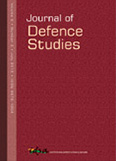Leadership and Management Theories in Indic Traditions
This article aims to rediscover some key aspects of leadership and management latent in ancient Indian secular texts of statecraft and governance that are relevant in contemporary times.
- P. K. Gautam |
- January-March 2019 |
- Journal of Defence Studies




